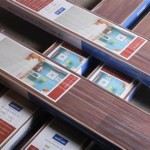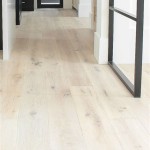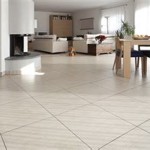Best Hardwood Flooring for Bedrooms: A Comprehensive Guide
The bedroom, a sanctuary for rest and relaxation, demands flooring that is both aesthetically pleasing and functionally sound. Hardwood flooring stands out as a popular choice, offering warmth, durability, and timeless appeal. However, selecting the "best" hardwood flooring for a bedroom requires careful consideration of various factors, including wood species, construction, finish, and budget. This article provides a comprehensive guide to navigating the world of hardwood flooring to make an informed decision for a bedroom space.
Hardwood flooring encompasses two primary categories: solid hardwood and engineered hardwood. Solid hardwood consists of planks milled from a single piece of wood. Engineered hardwood, on the other hand, comprises a core typically made of plywood or high-density fiberboard (HDF) topped with a veneer of solid hardwood. Both types offer unique advantages and disadvantages that should be weighed against individual needs and preferences.
Durability and Hardness: Selecting the Right Wood Species
The durability of hardwood flooring is largely determined by the hardness of the wood species. The Janka hardness test measures the force required to embed a steel ball into a piece of wood. A higher Janka rating indicates a harder, more dent-resistant wood. While harder woods are generally more durable, softer hardwoods can still be suitable for bedrooms, where foot traffic is typically lighter compared to other areas of the home.
Oak: Oak is a widely popular and readily available hardwood, making it a cost-effective choice. It offers a good balance of hardness (around 1290 on the Janka scale) and affordability. Oak also features a distinct grain pattern that can complement a variety of design styles. Red oak is generally slightly softer than white oak and tends to have a reddish hue, while white oak has a more subdued appearance and slightly greater water resistance.
Maple: Maple is another durable hardwood with a Janka rating of around 1450. It boasts a tight, consistent grain pattern, giving it a cleaner, more modern look. Maple is also relatively light in color, which can help brighten a bedroom. However, maple can be more susceptible to staining than some other hardwoods.
Hickory: Hickory is one of the hardest domestic hardwoods, with a Janka rating of around 1820. Its toughness makes it an excellent choice for high-traffic areas, but it can also be a good option for bedrooms if maximum durability is desired. Hickory has a bold grain pattern and significant color variation, adding character to the space.
Brazilian Cherry (Jatoba): This exotic hardwood is known for its exceptional hardness (around 2350 on the Janka scale) and rich, reddish-brown color. Brazilian Cherry is highly durable and scratch-resistant, but it can be more expensive than domestic hardwoods and may darken over time with exposure to sunlight.
Ash: Ash offers a similar hardness to oak (around 1320 on the Janka scale) and features a pronounced grain pattern. It is a versatile wood that can be stained to a wide range of colors. Ash is often more affordable than other hardwoods with comparable durability.
The choice of wood species ultimately depends on the desired level of durability, aesthetic preference, and budget. For bedrooms with light foot traffic, softer hardwoods like pine (though not typically recommended due to its extreme softness) or poplar could be considered if a specific aesthetic calls for it and extra care is taken. However, opting for a moderately hard to hard wood like oak, maple, or ash is generally recommended for long-term performance and resilience.
Solid vs. Engineered Hardwood: Considerations for Stability and Installation
The construction of hardwood flooring, whether solid or engineered, significantly impacts its stability and suitability for different environments. Solid hardwood, being a single piece of wood, is more susceptible to expansion and contraction with changes in humidity. Engineered hardwood, with its layered construction, offers greater stability and is less prone to warping or cupping.
Solid Hardwood: Solid hardwood is a classic choice that can last for generations if properly maintained. It can be sanded and refinished multiple times, allowing for updates to the finish or repair of surface damage. However, solid hardwood is not recommended for installation in basements or other areas with high moisture levels. Its tendency to expand and contract can lead to gapping and other problems.
Engineered Hardwood: Engineered hardwood is a more versatile option that can be installed in a wider range of environments, including basements (provided proper subfloor preparation and moisture mitigation are implemented). Its layered construction provides greater dimensional stability, making it less susceptible to moisture-related issues. Engineered hardwood is available in a variety of thicknesses, and the thickness of the veneer layer determines how many times it can be sanded and refinished. High-quality engineered hardwood with a thick veneer can closely mimic the appearance and performance of solid hardwood.
For bedrooms above ground level with stable humidity levels, solid hardwood is a viable option. However, if there are concerns about moisture or humidity fluctuations, engineered hardwood is generally a safer and more reliable choice. The ease of installation is also a factor, as some engineered hardwood products are designed for floating installation, which can simplify the process.
Finish and Texture: Aesthetics and Maintenance
The finish and texture of hardwood flooring play a crucial role in its appearance and maintenance requirements. The finish protects the wood from wear and tear, while the texture adds visual interest and can affect slip resistance.
Polyurethane Finish: Polyurethane is a durable and water-resistant finish that is commonly used on hardwood flooring. It provides a protective barrier against scratches, stains, and wear. Polyurethane finishes are available in a range of sheens, from matte to glossy, allowing for customization of the floor's appearance. Water-based polyurethane finishes are generally more environmentally friendly than oil-based options.
Oil Finish: Oil finishes penetrate the wood fibers, enhancing the natural grain and color. They provide a more natural look and feel compared to polyurethane finishes. Oil finishes require more frequent maintenance, including periodic re-oiling, but they are easier to repair than polyurethane finishes. Scratches and small imperfections can often be spot-treated with oil.
Prefinished vs. Unfinished: Prefinished hardwood flooring is finished at the factory, offering consistent color and finish quality. It is also typically easier and faster to install than unfinished hardwood, which requires sanding and finishing on-site. Unfinished hardwood allows for greater customization of the finish color and sheen, but it also requires more time and expertise to install.
Textured Finishes: Hand-scraped, wire-brushed, and distressed finishes add texture and character to hardwood flooring. These finishes can help to hide minor scratches and imperfections, making them a good choice for households with pets or children. Textured finishes can also enhance the rustic or traditional aesthetic of a bedroom.
For bedrooms, a matte or satin finish is often preferred, as it provides a softer, more restful look and reduces glare. A textured finish can add visual interest and camouflage wear and tear. The choice between prefinished and unfinished hardwood depends on the desired level of customization and the installer's expertise.
Beyond these key points, consider the overall aesthetic of the bedroom. Lighter wood tones can create a brighter, more spacious feel, while darker woods can add warmth and sophistication. The width of the planks can also impact the room's appearance, with wider planks generally creating a more modern look. Finally, review warranty information and maintenance instructions for any hardwood flooring being considered.
What Is The Best Flooring For Bedrooms Tarkett

How To Choose The Bedroom Floor Twenty Oak

What Is The Best Flooring For Bedrooms Modernize

The Best Wood Flooring For Bedrooms Ted Todd Fine Floors

What S The Best Type Of Hardwood Flooring America

How To Choose The Bedroom Floor Twenty Oak

Best Bedroom Flooring Ideas On A Budget Word Of Mouth Floors

The Best Wood Flooring For Bedrooms Ted Todd Fine Floors

Hardwood Floor Stain Colors Choosing The Best Options Flooring

Best Types Of Hardwood Flooring Floor Guide
Related Posts








